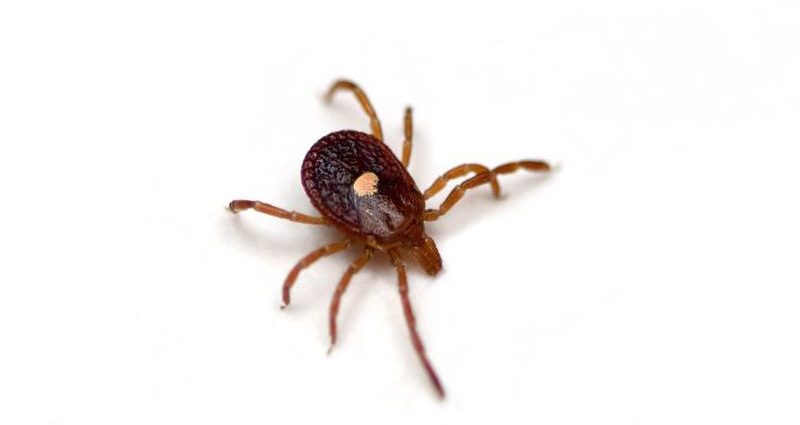THURSDAY, March 17, 2022 (HealthDay News) — The potentially deadly tick-borne Heartland virus is spreading across the United States and has now been found in Georgia, Emory University researchers report.
First identified in Missouri in 2009, the virus is found in the Southeast and Midwest and is spread by the lone star tick. The genetic fingerprint of the virus found in Georgia differs from that found in other states. This suggests the virus may be rapidly mutating, researchers say.
“Heartland virus is an emerging virus native to the U.S.,” said the study’s lead author Gonzalo Vazquez-Prokopec. He is an associate professor of environmental sciences at Emory University in Atlanta.
“There is no formal testing or treatment for the virus, and the level of transmission to humans is unknown,” Vazquez-Prokopec said. “Our findings contribute to the understanding of a pathogen that is poorly known and that could become a public health problem as people spend more time outdoors either recreationally or occupationally.”
In 2009, two men in Missouri were hospitalized with high fevers, diarrhea, muscle pains, low counts of white blood cells and platelets, and other symptoms of tick-borne diseases. Researchers called this previously unseen illness Heartland and found that it was common in lone star ticks. They also found antibodies to the virus in blood from deer and other wild mammals.
Since it was discovered, more than 50 cases of the Heartland virus have been seen in 11 states, according to the U.S. Centers for Disease Control and Prevention.
Many of these infections were so severe that patients had to be hospitalized. In a few cases, patients with other chronic diseases died from the infection.
In 2005, one patient in Georgia died from a then-unknown disease, later identified as Heartland virus. Vazquez-Prokopec’s team found that the virus had been in deer in Georgia since at least 2001.
As of last year, the Heartland virus had been found in Arkansas, Georgia, Illinois, Indiana, Iowa, Kansas, Kentucky, Missouri, North Carolina, Oklahoma and Tennessee, the CDC reports.
The lone star tick, which has a telltale white dot on its back, is so tiny it can go unnoticed on the skin, and you might not even know if you are bitten.
To get an idea of how pervasive the virus is in Georgia, the research team collected nearly 10,000 ticks. Roughly one in 2,000 carried the Heartland virus, the investigators found.
The lone star tick and the Heartland virus it carries may be spreading as climate change results in warmer winters, enabling the tick to expand its range. And as more people live near wooded areas, they are more likely to come into contact with deer and other animals that carry the virus.
These conditions have helped spread Lyme disease, another tick-borne infection. But unlike Lyme, which is a bacteria and can be treated with antibiotics, Heartland is a virus with no known treatment.
Heartland virus can cause fever, fatigue, decreased appetite, headache, nausea, diarrhea, and muscle or joint pain. The virus can also affect blood counts and liver function.
Symptoms and signs of Heartland are often similar to those of other tick-borne illnesses, such as ehrlichiosis or anaplasmosis (illnesses caused by bacteria), and it can take up to two weeks after infection for symptoms to appear, the CDC warned.
Vazquez-Prokopec doubts Heartland will become as common as Lyme.
“This is a virus that likely has a shorter infection period than Lyme,” he said. “Plus, the reservoirs are unknown. Other viruses transmitted by ticks (Powassan) have never been linked to the number of human cases such as Lyme.”
He added, however, that it isn’t possible to say how many people have been infected with the virus because there has been no nationwide research.
The report was published online March 16 in the journal Emerging Infectious Diseases.
Infectious disease expert Dr. Marc Siegel is a clinical professor of medicine at NYU Langone Medical Center in New York City.
He advises doctors treating what appears to be a tick-borne illness that doesn’t respond to antibiotics to suspect Heartland.
“We don’t have a treatment, and Heartland can be confused with something more treatable,” Siegel said. “So if I think somebody has ehrlichiosis or Lyme, I treat them with doxycycline, and if they don’t get better, maybe I would think of this as a possibility.”
He predicts Heartland will be seen in more places as the tick population increases, but he expects it to remain fairly rare.
“The deer tick, which carries Lyme disease, is the one I worry about the most,” Siegel said. “But we should be aware of this tick because it’s a growing problem.”
To protect yourself from tick bites, the CDC recommends:
- Know where ticks are. They live mostly in grassy, brushy or wooded areas and even on animals.
- Treat your clothing and gear with products containing 0.5% permethrin.
- Use insect repellent that contains DEET, picaridin, IR3535, Oil of Lemon Eucalyptus (OLE), para-menthane-diol (PMD), or 2-undecanone.
- Check your clothing after being in the woods or fields.
- To kill ticks on dry clothing, tumble dry on high heat for 10 minutes.
- Check your pets and gear for ticks.
- Shower after being outdoors.
- Check your whole body for ticks.
More information
The U.S. Centers for Disease Control and Prevention has more about the Heartland virus.
SOURCES: Gonzalo Vazquez-Prokopec, PhD, MSc, associate professor, environmental sciences, Emory University, Atlanta; Marc Siegel, MD, clinical professor, medicine, NYU Langone Medical Center, New York City; Emerging Infectious Diseases, March 16, 2022, online
Copyright © 2025 HealthDay. All rights reserved.

